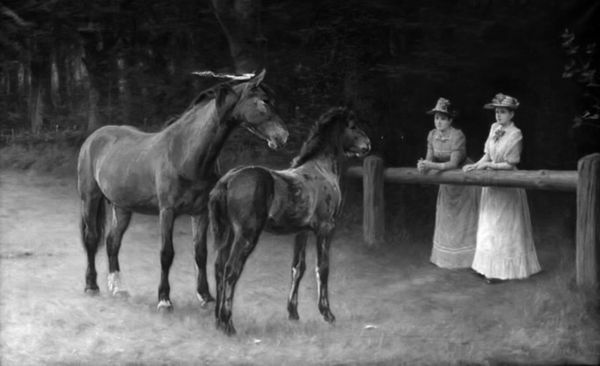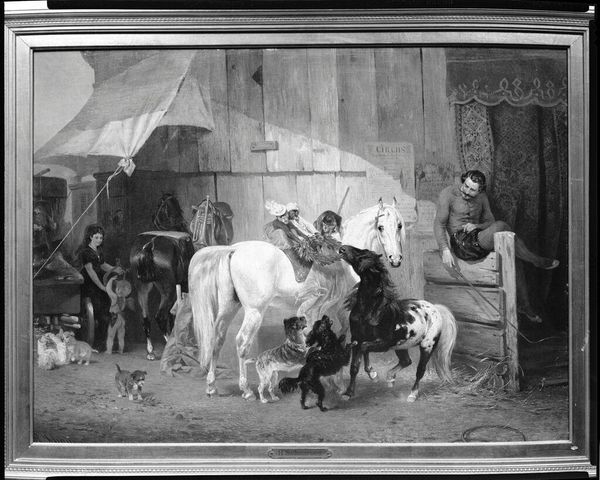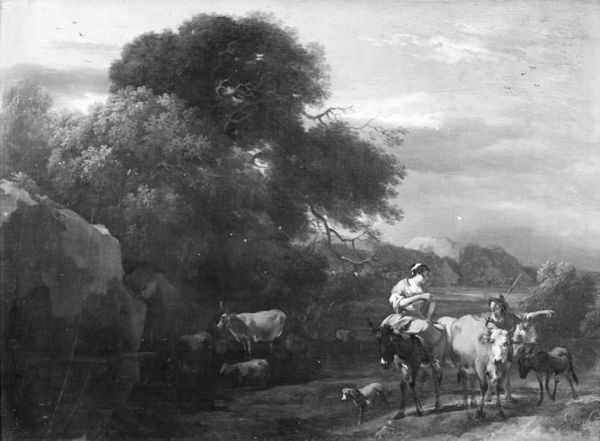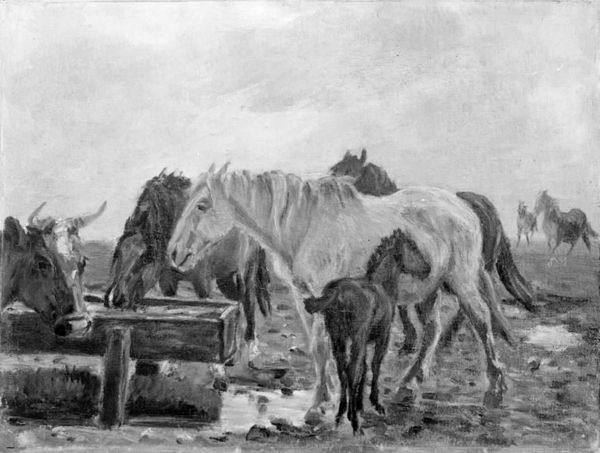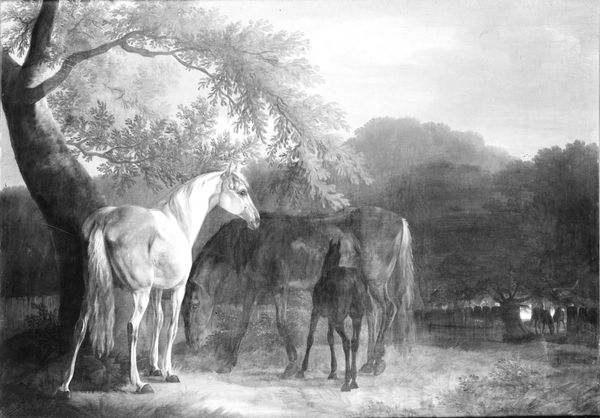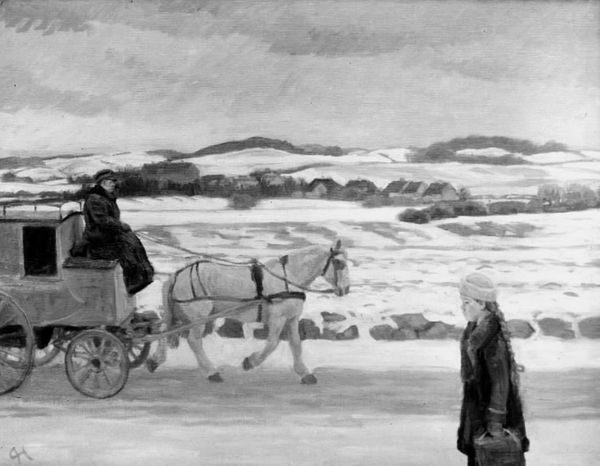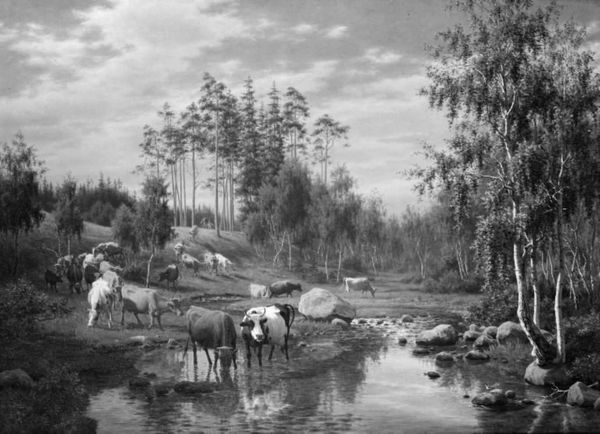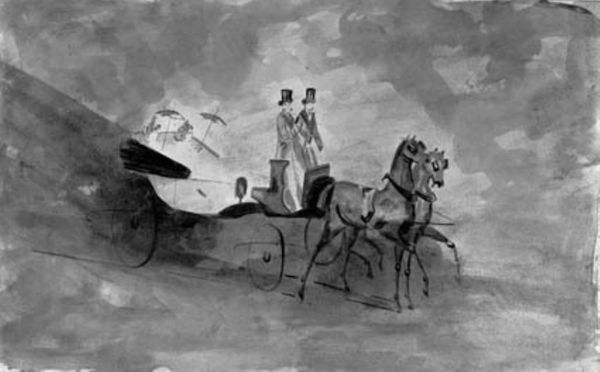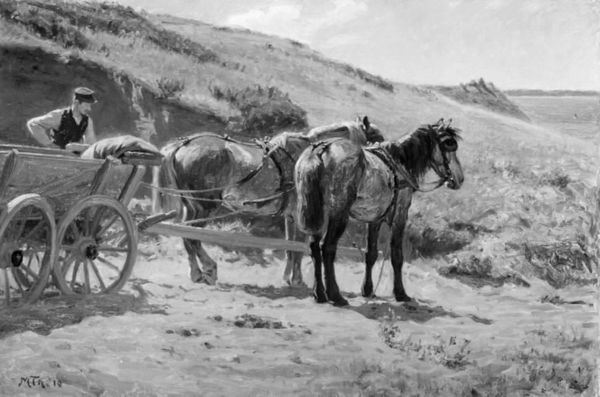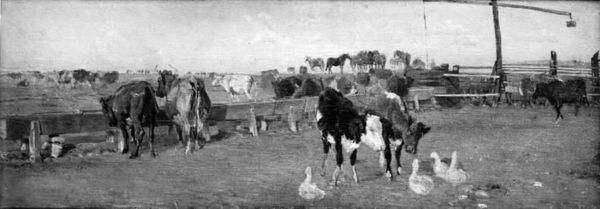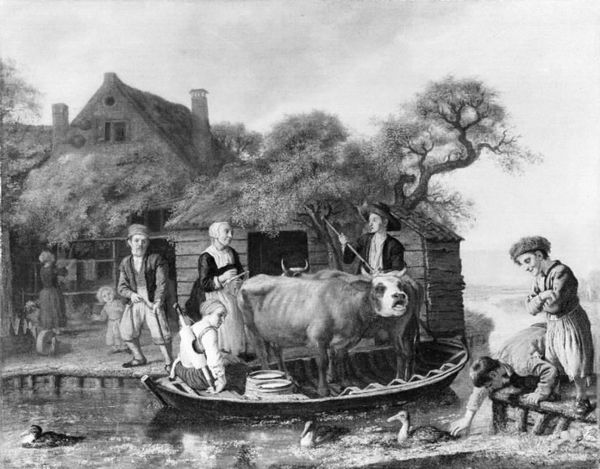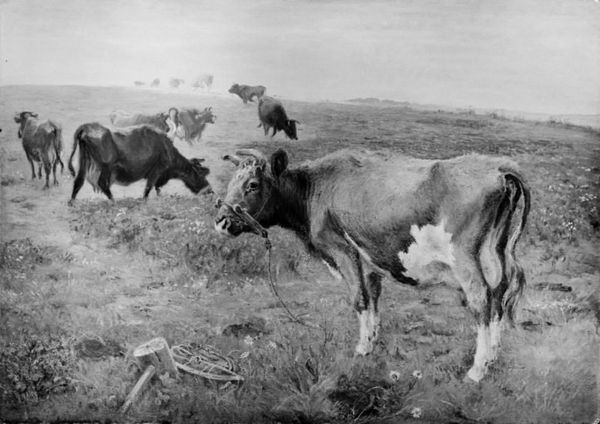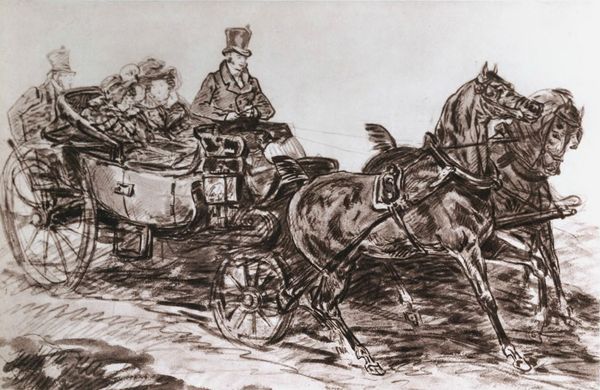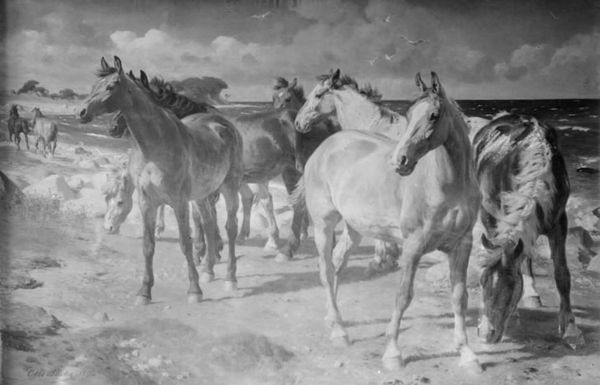
canvas
#
black and white photography
#
cool tone monochrome
#
black and white format
#
monochrome colours
#
warm monochrome
#
b w
#
canvas
#
black and white theme
#
black and white
#
monochrome photography
#
monochrome
Dimensions: 76.5 cm (height) x 100.5 cm (width) (Netto), 96 cm (height) x 119.4 cm (width) x 8.3 cm (depth) (Brutto)
Curator: This is Otto Bache’s “A Kneading Cart outside a Tileworks in Jutland” from 1864. It depicts a seemingly mundane scene, a man relaxing on a cart, a dog playing near an ox. But something about the rendering of everyday rural life makes me pause. What do you make of it? Editor: It's interesting how Bache captures this moment. The monochrome palette is compelling, almost stark, and the man appears very relaxed against what must have been quite physically demanding work. The whole thing seems very detailed, right down to the fur on the dog, which makes me wonder about the time and skill that went into it. How does this image speak to you? Curator: Well, immediately, I see the materials at play: the very earth from which the tiles are made, the rough wood of the cart, the animal labor powering this local industry. The canvas itself and the pigments Bache used – consider their sourcing, their cost, and the societal value placed upon the *rendering* of labor versus the *doing* of labor. Do you think that this work attempts to elevate or, perhaps, comment on the lives of these workers? Editor: That's a thought-provoking way to look at it! Perhaps both? There’s dignity in showing their world with such detail, but the leisurely pose of the man also creates a distance, a sense of observation rather than immersion. It makes me think about the intended audience of the piece. Would they recognize their privilege in the work depicted? Curator: Precisely! And how might their consumption of tiles – products of this labor – be implicated in the scene itself? Were the earnings sufficient, what did it entail? We also have to consider that while appearing straightforward, these images, by meticulously rendering working conditions, establish hierarchies by visually portraying power structures rooted in consumption and the means of production. Editor: I hadn't thought about the perspective of the consumer and their role in this image before. That’s fascinating, thanks for sharing that! Curator: Of course! It highlights how the art, its materials, the labor depicted, and its consumption are all intertwined in a social and economic context.
Comments
No comments
Be the first to comment and join the conversation on the ultimate creative platform.
